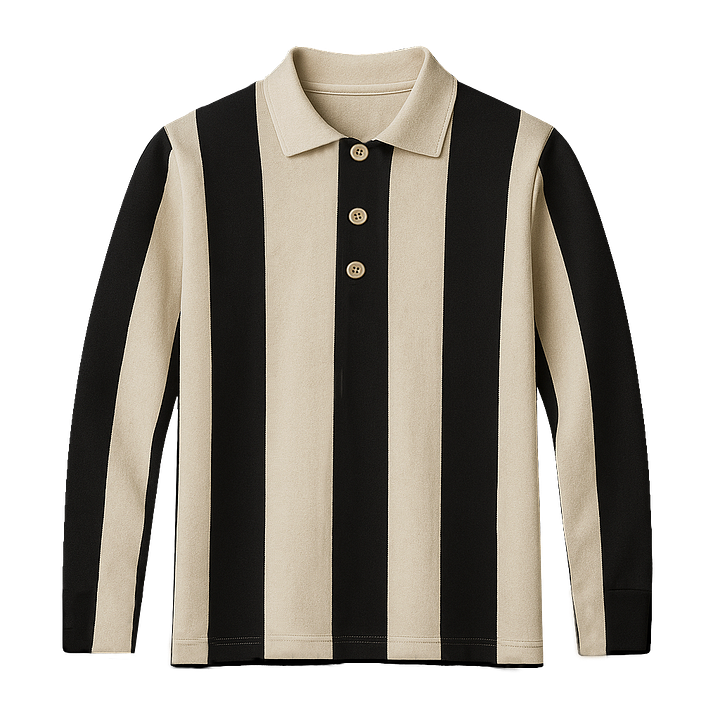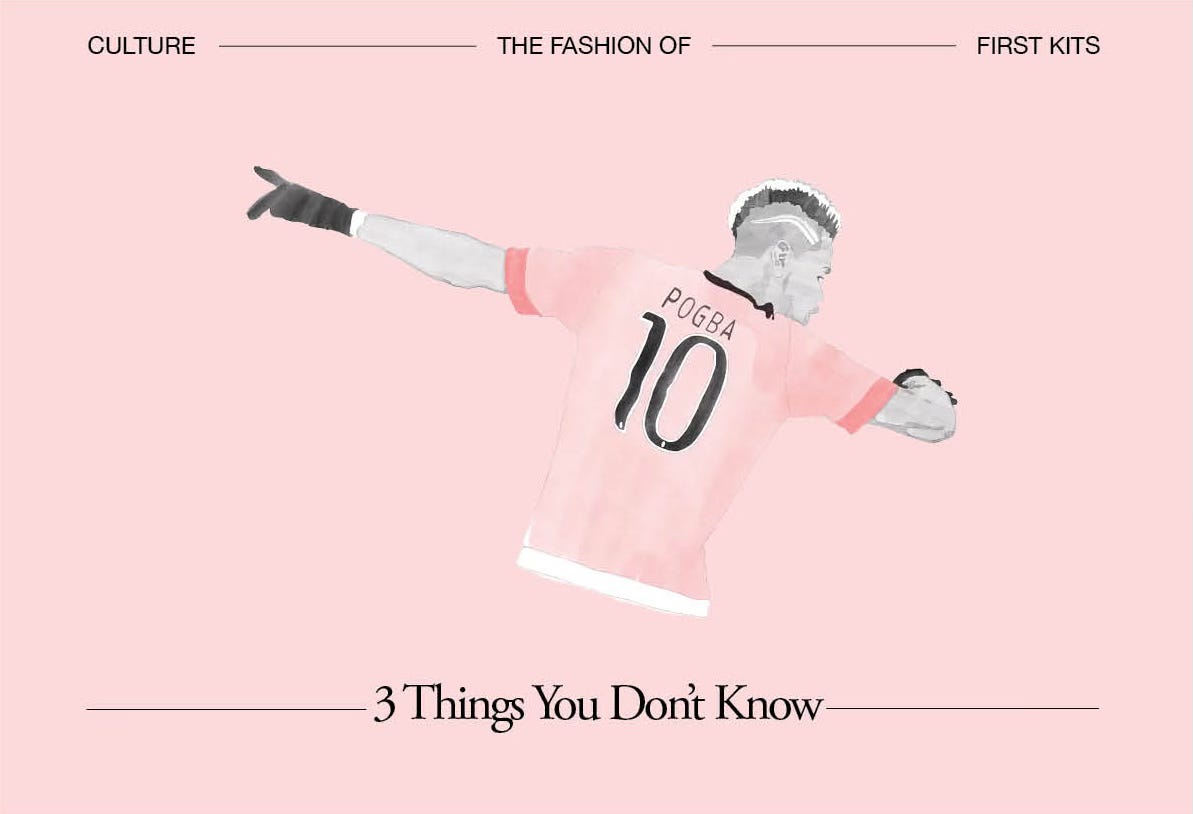Juventus, founded in 1897 by Turin students (the Canfari brothers et al. from the Massimo d’Azeglio Lyceum), first wore pink shirts with black ties. That color combination is still used for secondary Juventus kits from time to time. You might remember the one Paul Pogba made famous when a certain hip hop entertainer wore the pink jersey which then featured in an artistic rendition by Pharell.
The founding students from the Massimo d’Azeglio Lyceum had very limited means and simply used locally available fabric. Pink flannel or cotton was cheap and easy to find in Turin at the time. The black tie or ribbon was added for contrast — giving the otherwise plain shirt a touch of refinement. Some historians note that Eugenio and Enrico Canfari helped source the pink material from a local supplier, possibly through family connections in textiles. In short: the pink-and-black kit was born of convenience, not design — but it carried a youthful, genteel charm fitting for a club founded by teenage students.
Legend had it that Juve's original pink and black percale kit was replaced with the black and white striped one by mistake. As the story goes, a box arrived from England where the club had ordered a new set of kits, but the box contained Notts County's striped kit instead of their own. Since shipping and manufacturing in those days wasn't as simple as 'adding to cart' and selecting the desired speed at which to receive your purchase, it was a problem that would have taken months to rectify so Juventus was simply forced to accept and wear whatever was in the box.




Thanks to a recent 2021 deep dive by two researchers, Roger Stirland and Luca Formara, with their discovery of a Corriere dello Sport newspaper column and a diary entry by Domenico Donna (one of Juventus’ original players) we now know a lot more. The diary specifically mentions the first time the pink jerseys were retired, revealing the actual Juventus kit swap story. As the team was getting through those first formative years during the beginning of the 20th century, the soft pink color quickly faded, and by 1901 the club sought a sturdier kit (note that 1903 is still often mentioned as the year this occurred). Enter Englishman Tom Gordon Savage (aka Gordon Thomas Savage and aka John Savage), a Juventus player with Nottingham roots. Tom sent a letter to the Nottingham supplier, probably Shaw and Shrewsbury Sports Co., saying, "Send us at once an elegant kit for the team; let it be something lively, something eye-catching. We are tired of our muffled old-fashioned uniforms."
The package that arrived contained black and white striped jerseys from Nottingham club Notts County—the world’s oldest professional football team. Juventus, apparently reluctant, wore the bold stripes for the first time on Sunday, December 8th, 1901 in a match against AC Milan. Il correre dello sport La bicicletta article from December 9, 1901 resurfaced by Luca Formara reads:
“With kind thoughts the people of Turin had adhered to the invitation of the management of the Milanese club and yesterday from 2pm they were on the field of the Italian Trotter showing off their new colors, no longer white and pink but black and white.”
The 3 things you didn’t know…
1.
The pink was out of convenience not design.
2.
The black and white stripes weren’t a mistake after all.
3.
The Bianconeri team jersey switch happened in 1901 not 1903.
From faded pink beginnings to iconic black and white, the transformation forged a visual identity now synonymous with mythological greatness.



